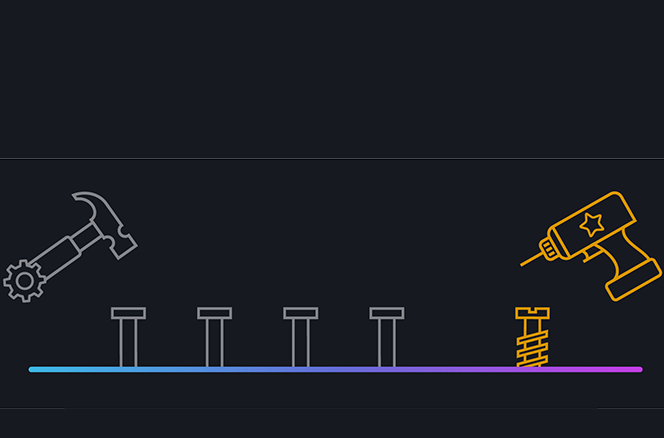As I walked around the 2024 NAB Show floor, I couldn’t help but notice just how many booths used the term “media supply chain” to advertise their solutions. Everyone seemed to have hopped on the bandwagon. I saw traditional MAM vendors now claiming to offer media supply chain management. Similarly, I saw vendors hawking various levels of automation or orchestration for the media supply chain. A wide range of tool vendors proffered specific functions needed somewhere in the supply chain. And, sadly, I saw vendors who call their technology a “platform” without having any idea of what a platform really is.
All these claims are bound to cause confusion for media companies as they seek the right solution — one that truly delivers media supply chain optimization for their businesses.
While the media supply chain needn’t be overly complex, it isn’t always as simple as some companies’ marketing would suggest. It would be great if all incoming content were perfectly formed, everything passed QC reviews, and not a single asset required compliance modifications. As most media companies know, however, the real world is quite different; every day they manage a great deal of variety and inconsistency, as well as numerous exceptions. That’s where complexity enters in. But with the knowledge and tools to accommodate those factors and process variable content, a company can make its media supply chain hum.
10 Considerations as You Evaluate a Platform
When it comes to selecting a media supply chain management platform for your media operations, it’s important to look holistically at what each vendor can provide. Here is a list of 10 considerations to ask your vendors about.
- Intelligence – Any media supply chain platform must be able to operate autonomously based on how it has been configured. This means knowing what needs to be done at every step of the chain: initiating the right supply chain upon content receipt, making the right decisions about next steps based on the results of the current step, notifying the right operators upon an exception, and automatically moving content through multiple steps until every required step has been completed.
- Automation – Activation, without human intervention, of machine-based tools to automate repetitive manual tasks is a key to driving efficiency in a media supply chain. As these tools continue to get more powerful, it’s important to be able to integrate the latest technologies to automate more work or make automated tasks faster and more accurate. Requiring operators to manually kick off jobs, or to initiate the flow of content through a supply chain, defeats the purpose of supply chain automation, even if some functions are automated. The platform should be able to automate the entire flow without reliance on manual triggers.
- Orchestration – Somewhat of a corollary to automation, the streamlining of a media supply chain depends on triggering the right actions with the right tools at the right time. A media supply chain management platform must be able to choreograph each task in the supply chain and make intelligent decisions about next steps based on the output of a previous task. The platform must also understand how to handle exceptions, such as when a QC report indicates that there might be an error in a piece of content. The most powerful orchestration works in conjunction with resource provisioning (see next item) to activate the necessary cloud-based technical infrastructure to support the tasks being performed. Unfortunately, many orchestration solutions neglect agile resource allocation, or simply work within the constraints of a pre-allocated, fixed infrastructure.
- Provisioning – Many vendors fail to enable provisioning of the technical resources needed to run the jobs being orchestrated in the supply chain. This is a vital capability! For the supply chain to remain agile and responsive, the management platform must be able to spin up resources on demand and spin them back down when the workload diminishes. Intelligent provisioning in a media supply chain platform activates the right resources when needed (to support the right tools doing the right actions) to complete each job as required in the supply chain, all while optimizing cost. Consider this: If a large content deal comes in, can the media supply chain infrastructure automatically scale up fast enough to accommodate it immediately? And can it scale back down when the job is finished? The management platform should be able to match the capacity of the infrastructure to the amount of work being done. Rather than build for peak load (as is often the case in media operations), which means leaving resources idle most of the time, use your supply chain management platform to allocate precisely the resources you need, only when you need them.
- Tool Integration – Being able to use the tool of choice for a given job is a key requirement for most media operations. (And for every job in the supply chain, you have a plethora of tools from which to choose.) That’s why it’s important to understand if a media supply chain management platform can support the tools that you want to use, and to know that there is an ecosystem of third-party tools available if you want to experiment with other tool providers. Be wary of “platforms” that allow you to use only their embedded tools, as you might not get all the functionality you expect.
- Manual Workorders – Every media supply chain includes a mix of automated and manual tasks, the latter often triggered by exceptions identified by automated jobs. If content is to keep flowing efficiently through the supply chain, manual and automated jobs must be well-integrated into the same supply chain orchestration. This works best if manual work can be guided by time-based metadata generated by the automated tools. In this case, operators can jump only to points of interest rather than scroll through the entire file looking for issues.
- Consumption Economics – Given the unpredictable demand for media processing within most media supply chains, it is important that infrastructure can scale up or down as needed. To match costs with actual infrastructure used, it is beneficial to have consumption-based pricing built into the platform. In some instances, the ideal cost profile comes from a hybrid model: licensed tools at fixed costs for baseline consumption, as well as consumption-based costs for work that is burst to additional resources being spun up in the cloud. Your media supply chain management platform should be able to support precise matching of costs to the work being done, without your having to maintain (and pay for) spare capacity in on-premise infrastructure.
- Monitoring – Visibility into all activity, at every step in the chain, is a key element of maintaining a smoothly running media supply chain. The management platform should collect information throughout the entire supply chain and surface critical alerts if any anomalies are detected. With immediate awareness of any issues, managers can make adjustments or fix problems right away, before they become larger issues or bottlenecks.
- Reporting – Due to the many activities involved in modern media supply chains, an immense amount of data is created as content flows from end to end. Hidden within all this data are insights that can inform refinements that, in turn, increase efficiency. Your management platform should be able to help you create reports and visualizations of data from the supply chain, thereby empowering you to identify potential bottlenecks or optimization opportunities.
- Sustainability – Migrating media supply chains to cloud-based infrastructure is inherently more efficient than maintaining on-prem operations, both in terms of resource utilization and carbon footprint. As cloud providers increasingly use renewable power sources, emissions associated with using cloud services continue to decline. Look for a platform that can measure your supply chain emissions and provide a report detailing your actual carbon footprint. With this information, you or your vendor can easily offset those emissions.
Looking at many of the media supply chain solutions presented across the NAB Show floor, I could see clearly that some vendors excel at one or two items from the “10 Considerations” list. A few could check the boxes for maybe half of the list. But very few can credibly claim to tick every box today. I’m not saying this to denigrate the many media supply chain solution vendors now in the marketplace, but rather to point out the importance of understanding your media operation’s requirements and then digging into what different vendors can really provide (with proven implementations).
Be alert to vendors’ oversimplification of media supply chain management, and be sure to identify which elements of the “10 Considerations” they truly can perform. Take time to understand and document your own media supply chain requirements, with a particular focus on where in your media operations you want to see greater efficiencies, responsiveness, and operational visibility. Map your requirements to what vendors can demonstrably deliver, and seek out existing customers to learn about their experiences with specific vendors. Armed with this information, you’ll be equipped to select the vendor that can best help you optimize your media supply chain.
If you would like to understand how the SDVI Rally media supply chain platform delivers on all 10 of the considerations listed here (and more!), reach out. We’d be happy to prove it to you.



